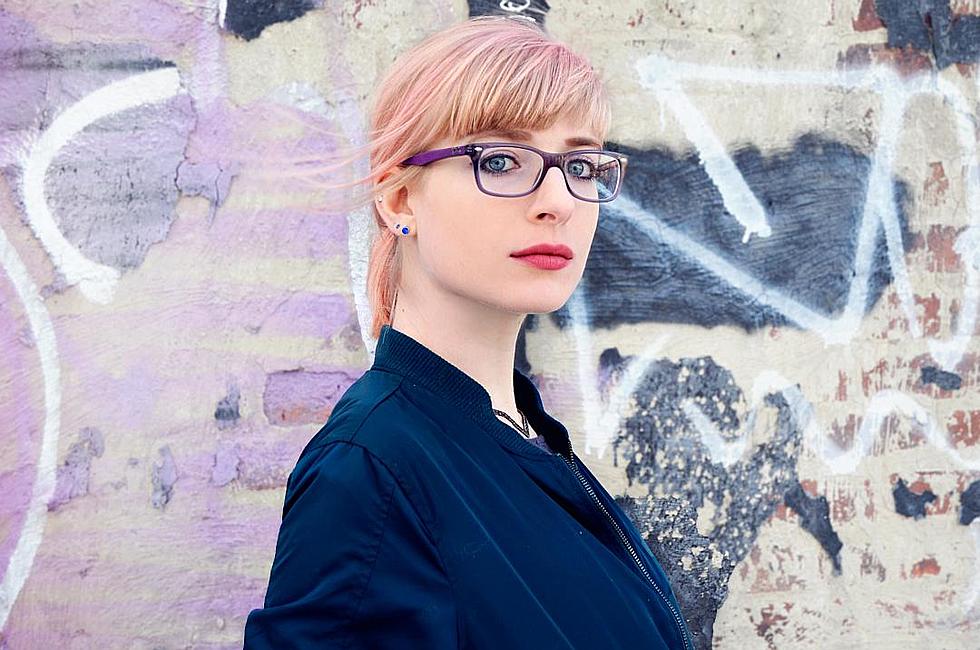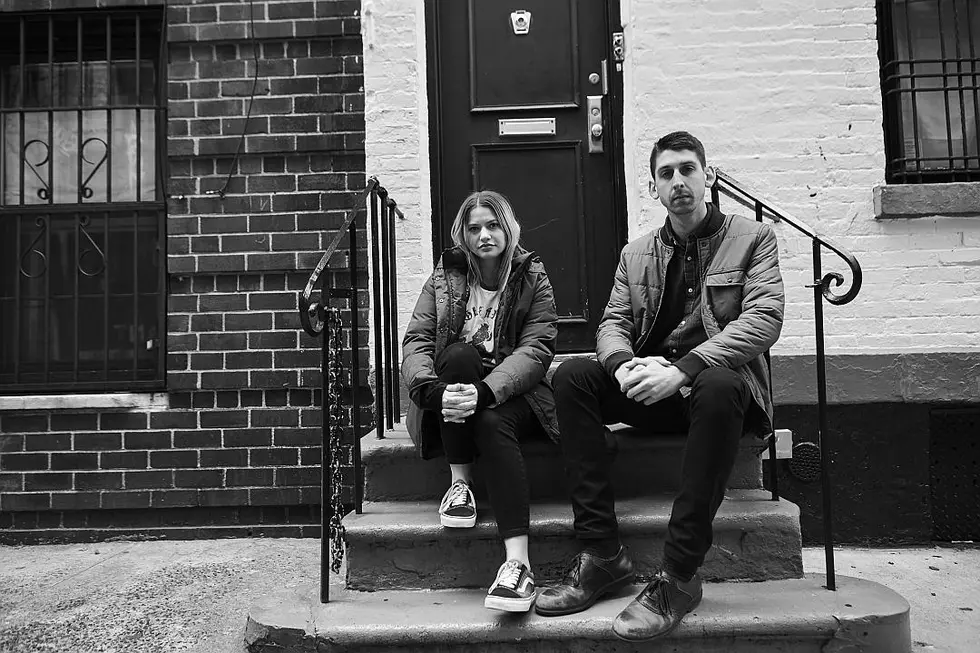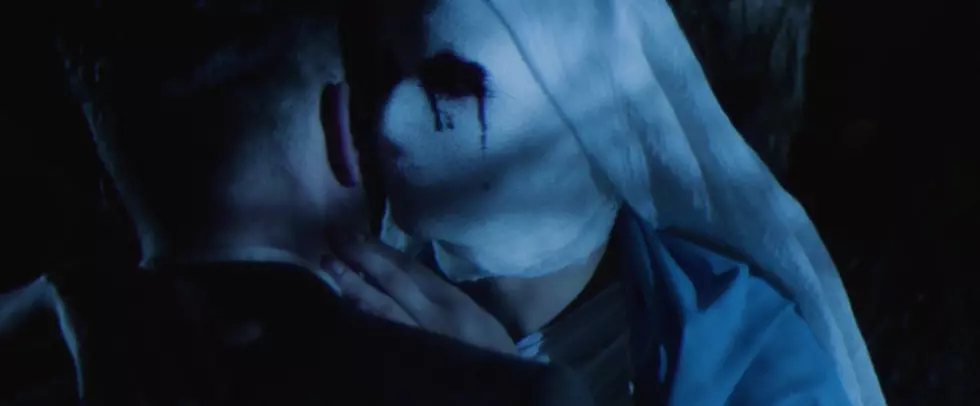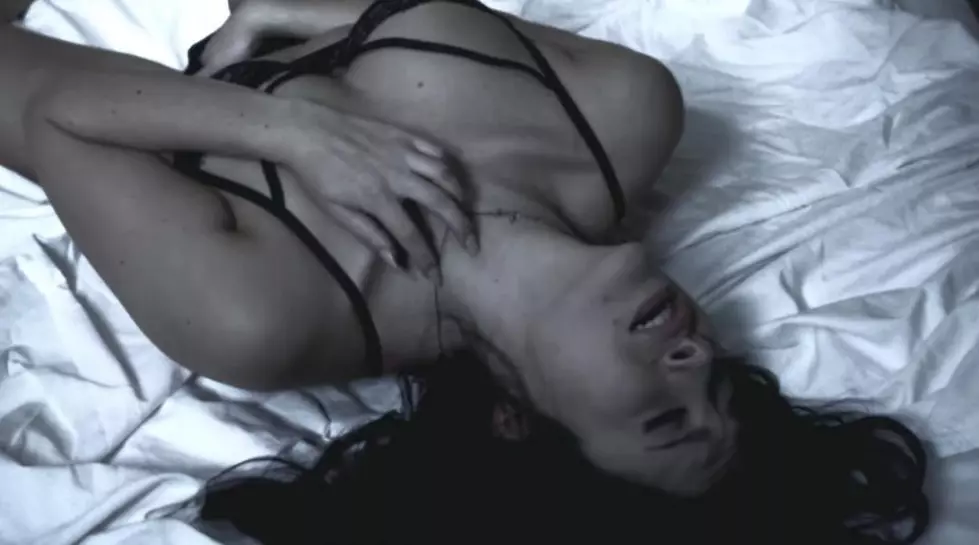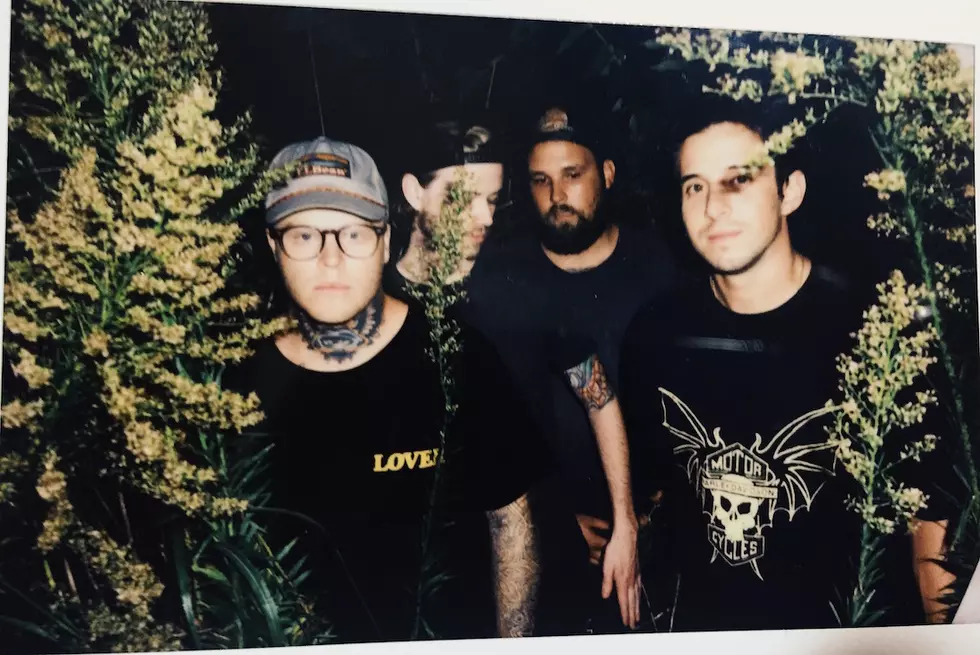
NYHC Legends Life’s Blood Flow Again on ‘Hardcore A.D. 1988′
When Life’s Blood blitzed upon the New York hardcore scene in 1987, it was at a stage in the game where every band was either aping the fervent, sober energy of Youth of Today or the tough guy vibe of Breakdown. Holding no agenda or flag to fly, with nothing more than a staunch and undying love for the music, they made a profound impact in their scant yearlong existence. Soon after the band’s messy implosion, guitarist and founding member Adam Nathanson went on to make wonderfully filthy-sounding music and rabble-rouse on a larger scale with his partner-in-crime Sam McPheeters in the band Born Against. The only vinyl evidence that Life’s Blood left behind of the greatness was their 7" Defiance and a split single with New Jersey’s Sticks & Stones. Both slabs are long out of print.
Relieving this situation on the vinyl front, San Francisco’s Prank Records is releasing a collection of Life’s Blood material titled Hardcore A.D. 1988 this month. The 26-track full-length contains both the songs from the Defiance EP, as well as the split single, plus a bevy of bonus shit, including their demo and live tracks from CBGB’s. We were so excited about this event, we got in touch with Nathanson to lead us through the brief — though crucial — history of the group.
I guess we’ll start with the obvious first question: How did Life’s Blood come together?
Neil Burke [Life’s Blood bass player] and I were 18; it was fall 1987. Clenched Fist, Neil's band with Dave Jones and Chris Ott, had just broken up. We put a “Seeking Drummer” flyer on the bulletin board at [infamous N.Y. record store] Some Records citing our influences as SSD, Crucifix and Black Sabbath. John Kriksciun — someone we already knew a little — called us and said he could play drums. One Sunday, all three of us went over to Giant Studios on 14th Street after the Youth of Today / Gorilla Biscuits “Shutdown” show that happened at CBGB’s in October — the one that temporarily suspended Sunday matinees there for awhile. Since high school, the three of us had been buying Jason O’Toole and Sam McPheeters' fanzine Plain Truth both at Some and See Hear, the fanzine store that was on East 7th. Both of them moved down from Albany and started at Eugene Lang College in September '87, living in the Union Square dorms, and hanging out on the scene. Jason tried out to sing for us in early 1988 at Giant. He was as much of a dork as we were, and had a great voice, so it worked out.
Was the motivation to start the band nothing more than youthful angst, or was there a specific reason or message or goal you all had in mind?
We started Life’s Blood believing we could do some anachronistic throwback to 1983-1985 hardcore, unlike the well-dressed-and-groomed trend taking hold at the time. As a band, we identified at the time with New York stuff like Nausea, Mental Abuse, Sheer Terror, Krakdown, Trip 6, Stillborn and Absolution. Totally hardcore punk, but not cookie-cutter stuff.
What do you remember as the initial reaction to Life’s Blood on the NYHC scene?
I remember pretty favorable reactions to what was oftentimes not a particularly good band. Our first Don Fury rehearsal demo, that we passed around but never sold, was completely out of tune. For about 20 dollars an hour, Don would let anyone record live straight to cassette from the board. He’d get the band set up, roll tape and then go back upstairs to his storefront apartment. Then you’d do 25 versions of your 10 songs on a 90-minute tape, barely able to focus because you were so psyched to be playing in the same room where Agnostic Front recorded United Blood and Victim in Pain.
At our first CB’s matinee, Mike [Fringo] from the band Stillborn lent me his guitar when I couldn’t figure out what was wrong with mine. Then Crazy Jay Skin from Warzone helped me tune it onstage mid-set because I had no idea how to do that with a locking tremolo system. Embarrassing times. Still, the appearance won us fans. There was so much enthusiasm for every little thing back then. It was just a weird time. Every subsequent band I did got less and less turnout than Life’s Blood. The enthusiasm graph would go down at a 45 degree angle: Born Against down, (Young) Pioneers down further, with Teargas Rock hitting the x-axis. Sorry, I’ve been teaching GED for the last 15 years.
From the start, it seemed like Life’s Blood were very determined. In the brief amount of time you were around, you may have accomplished more than most bands do after years of existing. It almost seemed like you knew the band was going to implode at any time. What was it that kept the band so hungry to do shows and put out the Defiance 7" right away?
I know I was a little imbalanced and thought hardcore was some sort of Buddhist monk army, so I put all my energy into it as if the world was about to end. We were not casual people. Steve Reddy — who was in the Albany-based band Wolfpack — and especially Dave Stein from the Combined Effort label were the ones who made the Defiance 7" happen so quickly by believing in us and paying for us to record it at Don Fury Studios in Little Italy.
What are the Life’s Blood shows that still stick out to you now?
In spring of ’88, we played Nightingale’s on 2nd Avenue with Jeff Perlin’s newly reincarnated Breakdown and old scene uncles Mental Abuse. Great end-of-the-school-year energy in the air. However, a lone and unknown ruddy-faced drunk skin in a Skrewdriver T-shirt got turned into hamburger that afternoon, on the dancefloor and out on the sidewalk. He was propped up against the wall in a stupor for flying kick practice. Freddy Alva has a photo from minutes before this went down. Though I didn’t care about the interloper personally, it was a sign of the level of violence in the scene that would not long afterward get totally insane.
It seemed like the band was on a pretty good tear up until about the fall of 1988. What exactly happened that slowed you down?
Jason quit during the summer of 1988. These kinds of things aren’t meant to last anyway; we probably hung on longer than we should have for the rest of the year.
I remember a rumor milling about at the time that Jay from Krakdown was going to take over when Jason quit.
Jason from Krakdown never did wind up singing for us, though I wanted him to. I think he didn’t like our lyrics. Honestly, besides Paul Bearer’s lyrics from ’85-’88, did any of us write any keepers?
How did NYHC legend Tommy Rat come to sing for you at one post-Jason O’Toole how?
Neil and I really dug Tommy Rat’s singing in Trip 6, Psychos and Warzone. During the summer after 12th grade, Neil even did a short-lived band with Tommy and Larry Heartless called Just Us. So, when Jason bailed on Life’s Blood at the end of summer ’88, we were dying to play after having been on hiatus all summer waiting for him to come back to start his sophomore year at Lang. Tommy agreed to do this one-off show with us at Cats and Dogs on Rivington Street. The set was filthy chaos! We covered “Blind Destruction” by Crucifix, which Tommy was totally down with. He really helped us out and captured the spirit of the moment. Sean Murphy, later of Collapse, sang briefly for us after that. The last show took place on a nondescript night in December 1988 at Downtown Beirut II with SFA. I remember a dude asking for change in the median on East Houston that evening, his leg bloated and ulcerated so bad that had cut his pants open up to the knee.
During Life’s Blood, you started do a series of flyers / newsletters you called Warprayer. These flyers could be taken as being pretty antagonistic — to put it lightly — towards the slowly encroaching element of larger independent labels onto the scene. It seemed for as much as you loved hardcore, there were things about it that really grated on you.
My 48-year-old self wouldn’t handle my beefs that way, but that doesn’t change anything. I felt hardcore had to stay underground because I really hated mainstream society and capitalism. One time in the mid-’90s at the 99X Store, Duane Rossignol [owner of Some Records] tried to explain to me what an irreconcilable dichotomy that was from conventional wisdom. Ironically, my pure idea of hardcore was already on its way out by 1985, and long gone by the time I made it my platform.
Do you think that extreme way of addressing things carried over stronger into Born Against?
Of course the approach kept going in Born Against. Punk’s about a sense of outrage, isn’t it? Still, I should’ve chosen better targets for my outrage than people I’d shared a small scene with for the previous several years. Hindsight’s 20-20, but I should have railed more against things like gentrification of the Lower East Side and U.S. involvement in the war in Central America instead — things that still we’re still feeling the aftershocks from today. At the time, people in my peripheral vision were fighting back — Pete Missing from Missing Foundation smashed the windows out of condo lobbies and chain stores, and the Committee in Solidarity With the People of El Salvador had an office right on Lafayette near Bleecker, a few blocks from CB’s and the apartment where I crashed every weekend. Sam even volunteered there all the time, but I never went with him.
Do you think Life’s Blood coming out and not really aligning themselves with the popular factions of hardcore at the time inspired some other bands to do their own thing? For example, I remember early on that Rorschach covered your song “Not for the Weak,” so they were obviously inspired by the band.
That’s a cool example that I had forgotten. I hope that sentiment’s true, too. Mark Telfian of Limp Wrist claims he saw a video of the Beastie Boys playing “Youth Enrage” in the ’90s. Let me know if you come across it.
I’ve seen some things on social media where people made comments like, “I hope the Life’s Blood stuff being reissued means they’re going to reunite.” I’m not saying that I know you extremely well, but I know you would never do such a thing. What are your personal thoughts on this reunion culture that permeates through underground music these days?
I won’t do any reunions. There’s no harm in them. Though, for perspective, the Greatest Generation sat around drinking in VFW halls when we were kids, talking about leaving their young wives and families behind and taking shrapnel at Iwo Jima and Normandy. The ’60s and ’70s movement, people reminisced on fighting to stop racism, poverty and war stateside. We’re collectively reliving our glory days on the level of a varsity quarterback who blew the championship game with an incomplete pass in his senior year.
Now, as a grown-ass man, what do you look back on most fondly, as far as Life’s Blood goes?
My fondest memories of Life’s Blood have to do with being around people of every background imaginable in a totally uncontrived way that hasn’t happened for me since. When we started doing Born Against the following year and traveled to other towns, we saw a lot of guilt and hand-wringing about scenes being too white, male and middle class. Well, the NYHC scene I had come up in was overwhelmingly male, but it certainly wasn’t dominated by privileged whites. So, I wasn’t totally sure what people in Olympia and Santa Barbara were talking about at first. In Richmond, where I’ve lived for the last 24 years, white middle class people don’t interact much with anyone else, even as [it] relates to music. That just wasn’t the case in NYHC in 1988!
How do you think being in that band still informs your life in the here and now?
I was talking to Ted Leo at our friend and mutual bandmate Marty [Key]’s wedding about 10 years ago, admitting I hadn’t done much music lately. Ted said, “Yeah, but you’re a lifer.” It may seem pedestrian, but that’s pretty meaningful to me.
Pre-order Hardcore A.D. 1988 from Prank Records here.
More From CLRVYNT
